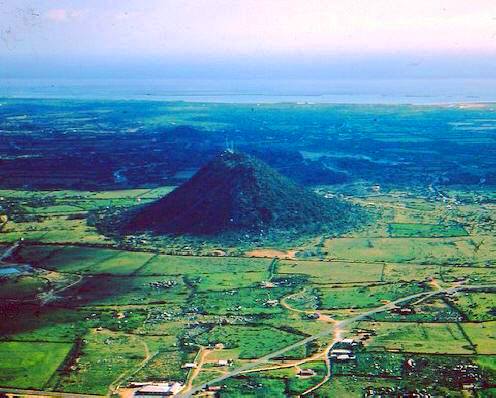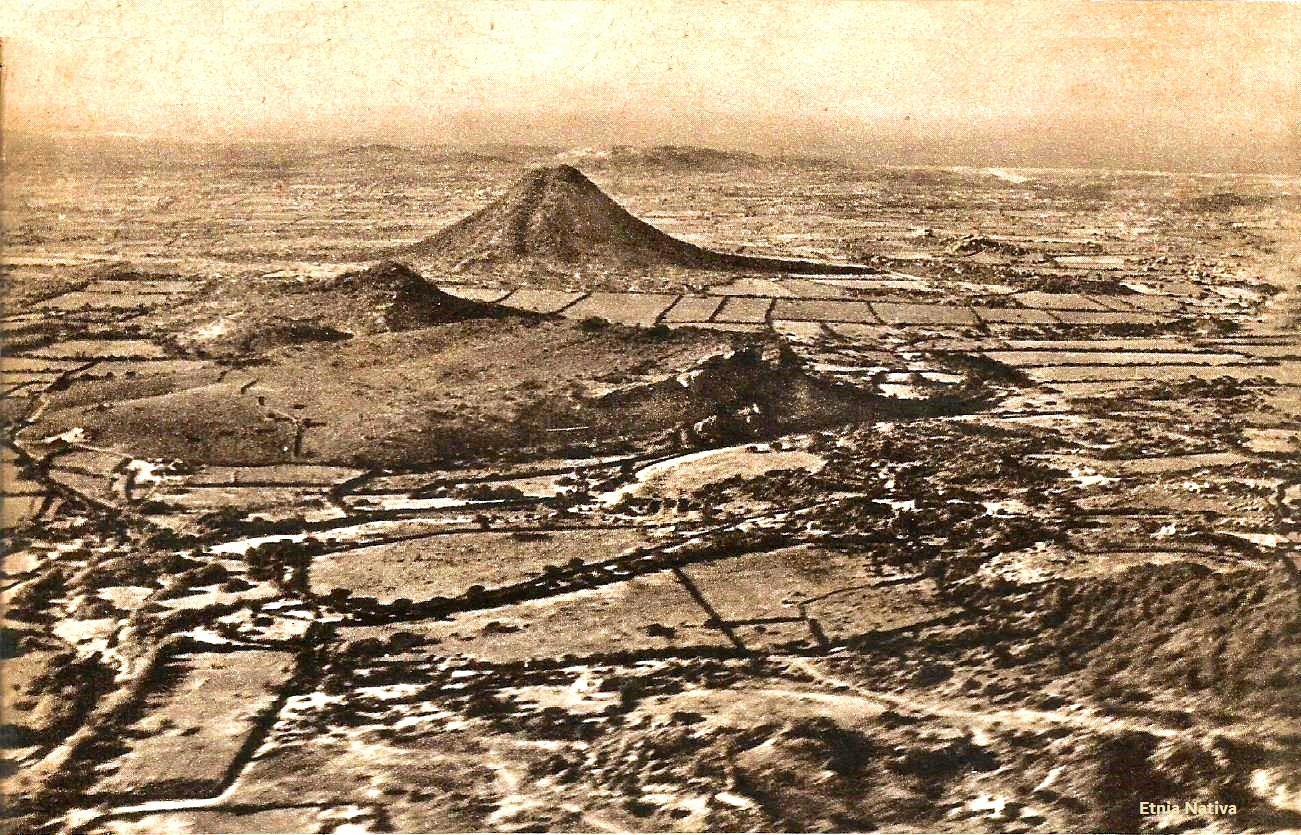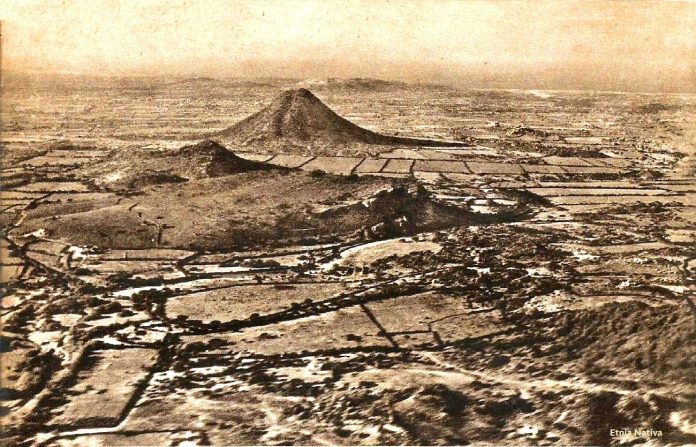Booking a magical glimpse inside Etnia Nativa
Article by Etnia Nativa call us 592 2702 and book your experience!
Each week, Aruba shares with you through the eyes of Etnia Nativa, an experience way beyond tourist attractions. Ancient island cultural heritage with its own native knowledge that teaches responsibility. The expression of gratitude and appreciation acknowledges a traditional existence on a limited space that once provided a very sustainable living.
In this episode, we share some details concerning the many names given to one of the best-known mountains or hills on the island: none other than Hooiberg, a hill or mound located practically in the middle of the island that can be seen from almost anywhere.

The Hooiberg is a dead volcano. It has been raised up for millions of years and has gone through a yet older lava formation. Its height is 165 m (541 ft.) without being the highest elevation, since the highest elevation is Yamanota, at 188 m (617 ft), located within the Arikok National Park.
Now as for the name, in Dutch the word “hooi” stands for hay and “berg” for mountain, thus Hooiberg means haystack, just as its silhouette suggests a solitary stack of hay. However, it was not always called Hooiberg. Before the Dutch, the Spanish were here and called it “Pan de Azúcar,” or Spanish sugar bread. On the other hand, the natives or ancestors who lived here before and for hundreds of generations had their own names to identify that geo-spot when they were returning from the continent in their dugout canoes. Hooiberg wasn’t the name by which they knew it.

At this precise point, our story takes yet another turn since those who received the Spaniards were the industrious Caquetio tribe, who settled on the island thousands of years ago. They were ancient farmers and fishermen who traveled from the tropical forests of South America, colonizing the area of the Caribbean.
The Caquetio tribe exploited an agro-potter economy of Arawak-speaking hunters, fishermen, and farmers who colonized almost all the islands of the Caribbean Sea. They displaced the former Paleolithic people who presided over them; at that time, Aruba was an island that provided abundant hunting and fishing possibilities.
The story goes that for the ancient Caquetios”, in their Arawak language, our Hooiberg was called Orcuyo.”
These first inhabitants of Aruba were people who had great knowledge that was transmitted from generation to generation, and that is also how many native stories continue to emerge day by day from every corner of this mystical island.
It was these first agro-potter inhabitants who introduced the new agricultural technique of slash-and-burning at “Cunuco” because they were from the tropical continental forest and frarming that tecnich successfully. The method known as land clearing for agricultural purposes is associated with the cultivation of roots and tubers such as cassava, yams, sweet potatoes, bananas, plantains, etc. There were also many seeds that could be ground into flour for the production of their main staples, such as arepas, cachapas, ayacas, pan bati, funchi, etc.
Now you know that this small island destination has thousands of years of history, culture, and tradition, and a special meaning for the natives, reflected in how we call our island in our local Papiamento language: “Aruba, nos baranca stima,” meaning Aruba, our beloved rock.
Get to know the true native culture and discover the island behind its white-sand beaches and turquoise waters. We firmly believe that by sharing our memories, we maintain the true identity of this small and beautiful place nestled in the Caribbean Sea.
The native people have a mentality of belonging to the natural world in all its forms and expressions.
If you are in healthy condition, dare to climb the steps to the top of Hooiberg. From there, the view of the sunrise is simply impressive; it is the most beautiful and peaceful moment from where you will see how each day begins, on “nos baranca stima.
We encourage you to check out the weekly educational online episodes through Island-Insight, the more complete cultural blog of Aruba, and get to know that by getting to know the native feeling, you will love Aruba beyond its beaches.
Want to connect and know a bit about your travel destination? Geology, history, autochthonous art, people, and the true identity of the island. You should book a visit to Etnia Nativa, a unique native gem! Let Anthony, our acclaimed cultural columnist, guide and lecture you regarding the most interesting and revealing stories about Aruba. Undiscover a native adventure beyond beaches and tourist traps. A magnificent dwelling that integrates reused materials with nature and bursts into culture and island heritage! Whats App +297 592 2702 etnianativa03@gmail.com




















